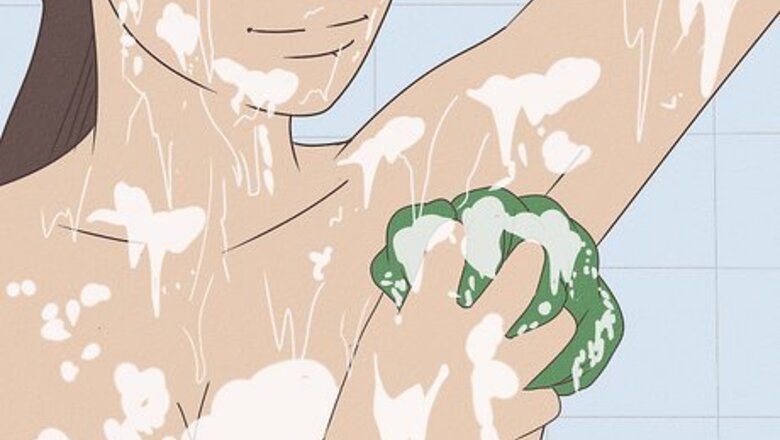
views
Using Home Treatments
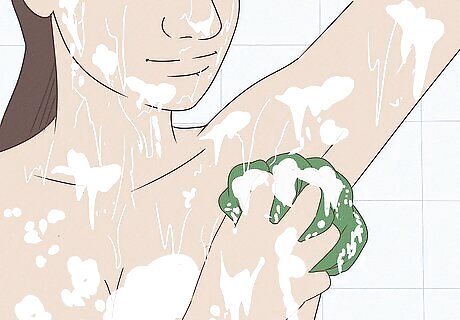
Shower or bathe regularly to reduce scent. Bacteria on your skin can turn old sweat into smelly armpits. Shower daily to wash away the sweat before this happens. Try ending your shower with a minute or 2 of cool or cold water. This will lower your surface temperature, making you less likely to sweat right away. Pat your armpits dry with a soft towel. Vigorous scrubbing can cause your skin to get irritated and stressed, leading to more sweating.
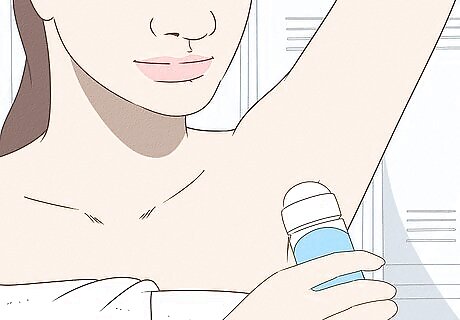
Wear antiperspirant deodorant. Ordinary deodorant only hides smell. To stop soaking your clothes, you'll need a product with antiperspirant. Apply this just before bed and right after you wake up, or after drying off from your shower. Your skin is usually cool and dry during these times, so the antiperspirant can block the sweat more effectively. When you buy deodorant, check the label to make sure it says both “antiperspirant” and “deodorant.” Most antiperspirants include aluminum compounds that can cause yellow armpit stains. Launder stained clothes soon, before the stain sets.
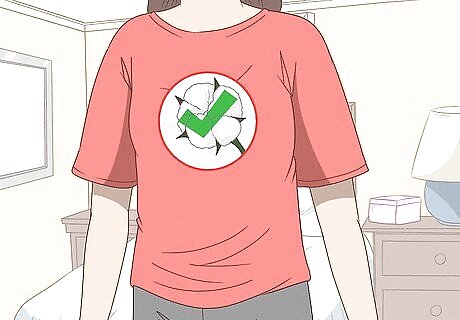
Wear loose, natural clothing. A lightweight cotton T-shirt, for example, will wick moisture away from your skin. Having your shirt absorb moisture may sound like a bad thing, but this will keep your skin cool. A heavy or synthetic shirt will keep you hot, causing your body to sweat more. If you still sweat through these clothes, wear a light undershirt as well.
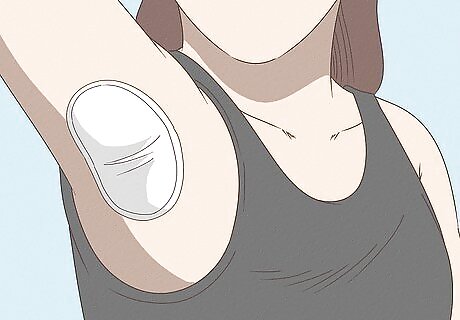
Wear sweat pads. These cotton pads stick to the underside of your shirt and absorb sweat so less of it soaks into your clothing. Look for these at drugstores, sold as "underarm shields," "armpit guards," and similar names.
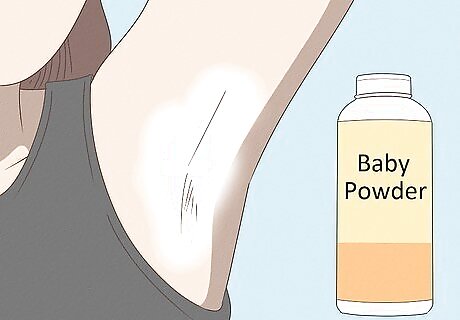
Sprinkle baby powder on your underarms. Baby powder (talcum powder) absorbs moisture, so it can prevent soaked clothing. This is generally not as effective as antiperspirant deodorant, but won't stain your clothes. Talcum powder has been tentatively linked to cancer. Avoid inhaling it or applying it to the female groin. For a safer alternative to talcum powder, try cornstarch-based baby powder.
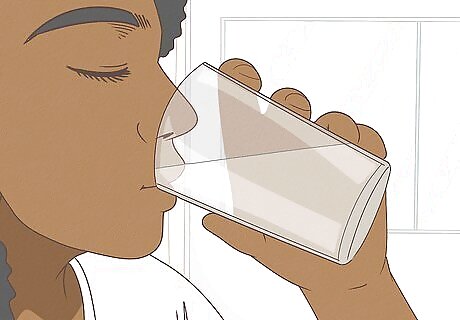
Drink enough water. Whenever you feel hot or thirsty, drink a glass of cool water. This will bring your internal temperature down, so your body won't have to lower it more by sweating.
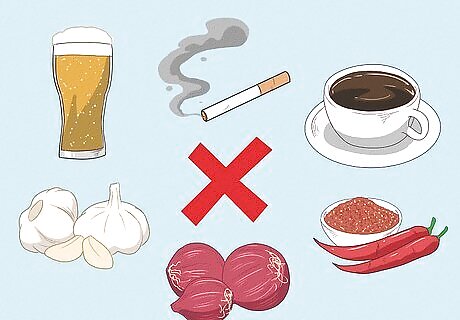
Reduce sweat triggers. Many people suffer from hyperhidrosis, or excessive sweating, for genetic or hormonal reasons. Whatever the cause, certain foods and substances can worsen the problem. Consider the following changes if they are part of your daily habits: Quit smoking or other nicotine sources. Reduce your alcohol intake. Stop consuming caffeine. Avoid eating spicy foods, since these can cause excessive sweating. Watch your garlic and onion intake as well, since these add odor to your sweat. Ask a doctor for alternatives if you think your medication causes sweating. Blood pressure and diabetes medication can do this, but don't quit them without medical advice, as doing so could have severe consequences for your health.

Try drinking sage tea. Sage tea is a traditional treatment for excessive sweating. This has not been tested one way or the other in scientific studies. If you try it, drink it daily in the evening, so the heat of the tea doesn't cause sweating during the day. Consult a doctor before taking large doses of sage supplements, as they can have serious side effects. Sage in dietary amounts is mostly harmless, but may harm people with diabetes, epilepsy, bleeding disorders, or an allergy to the plant. There are many types of sage. Typically, this treatment uses Salvia officinalis or Salvia lavendulaefolia.
Getting Medical Treatments
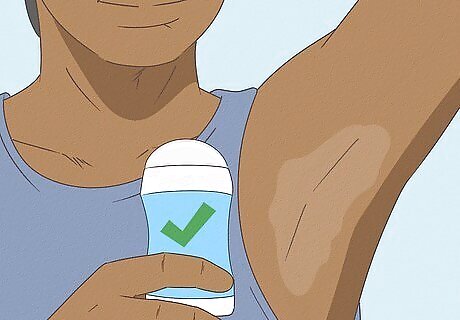
Get a prescription-strength antiperspirant. Your doctor can prescribe a stronger antiperspirant than those available over the counter. These are typically applied only once or twice a day, and in small amounts, due to the more concentrated chemicals. Once this gets working, you'll only need to reapply once every week or 2. These can irritate your skin. If necessary, ask your doctor for hydrocortisone lotion to soothe your skin.
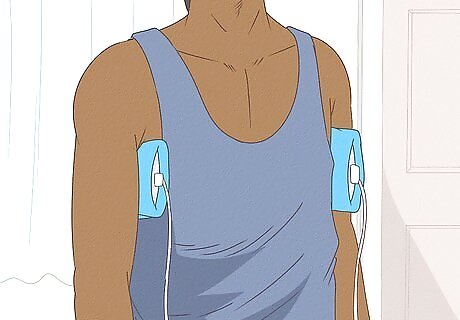
Consider an iontophoresis device. These soak the sweating area in water, then send a mild electrical current through it. While it is unclear why this works, it is a mainstream medical treatment. This is generally more effective for hands and feet, but special devices do exist for armpits. Ask a doctor about this treatment, or purchase a less powerful over-the-counter version. Patients generally try the treatment daily for several weeks, then continue on a less frequent schedule if effective. Ask a doctor first if you have a metal medical implant (such as a pacemaker or IUD), if you are pregnant, if you experience cardiac arrhythmia, or if you have a skin rash on your underarms. This treatment can cause red skin, and more rarely blisters.
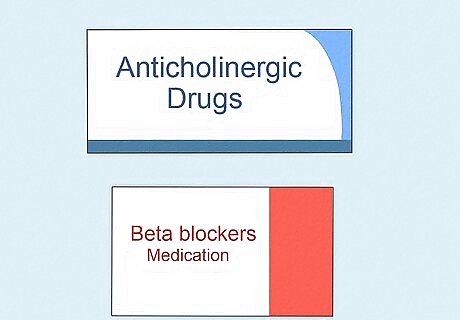
Consider powerful oral medications. There are several types of pills that can reduce sweating, but these have serious side effects. In some cases, your dermatologist may recommend a Botox injection or other treatment before these are considered. The following are 2 of the most common treatment approaches of this type: Anticholinergic drugs are effective in about 50% of cases, but often cause unpleasant side effects such as confusion and constipation. Beta blockers can reduce sweating, particularly if caused by anxiety. All drugs of this type have serious side effects, and cannot be taken by people with asthma or most heart conditions. Any beta blocker may cause depression or dizziness, and specific drugs may have additional side effects.
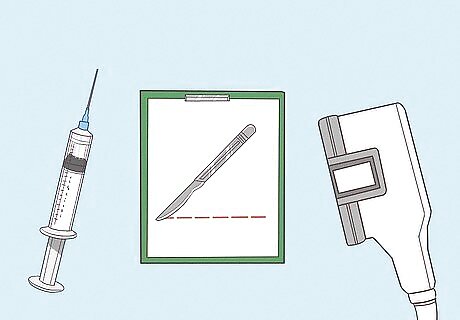
Ask a dermatologist for more powerful treatments. The following treatments should only be administered by an experienced dermatologist. In most cases, your medical insurance will not cover these procedures. Ask your dermatologist or primary care physician to recommend an MD licensed in these types of treatments. A Botox injection at the armpit can paralyze nerves sending signals to sweat glands, typically for a few months. The FDA has approved this treatment for the armpit only, when antiperspirant has failed. Risks are very low when the procedure is performed properly, but include life-threatening issues. Microwave treatments to remove sweat glands are FDA-approved, but only recently. They may not be available in all areas. In severe cases, a dermatologist can surgically remove some of the sweat glands or their attached nerves. Liposuction is typically the type of surgery recommended for underarms. Risks are low, but there is a chance of serious problems. Never have these procedures done by an unlicensed practitioner.


















Comments
0 comment